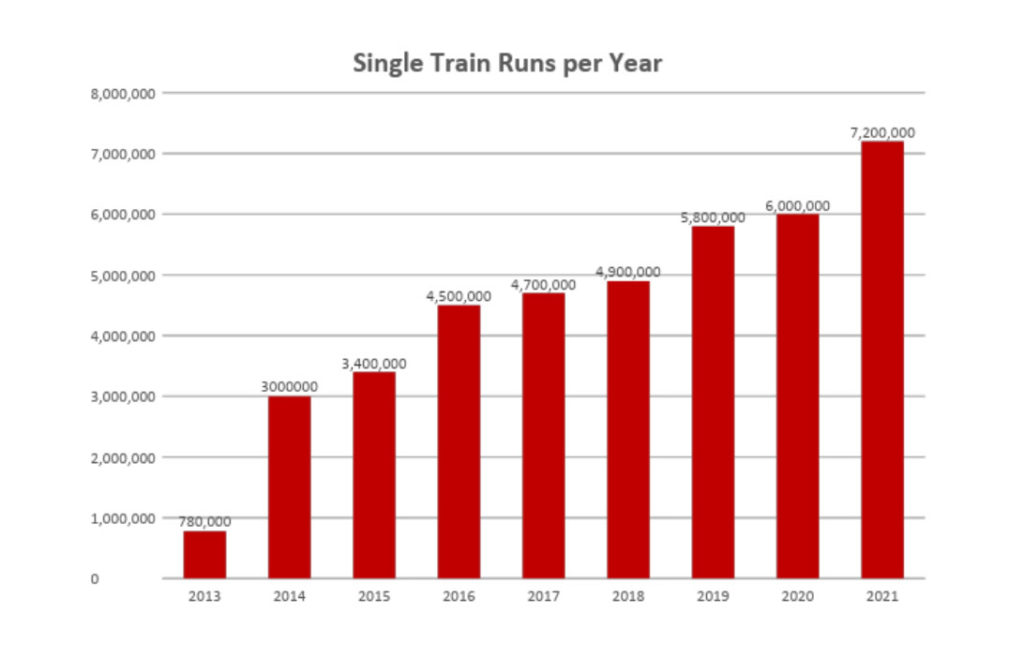What is the Train Information System (TIS)?
The Train Information System is a web-based application that supports international train management by delivering real-time train data concerning international (partly national) passenger and freight trains. The relevant data is obtained directly from the Infrastructure Managers’ systems.
The system is already fully TAF/TAP TSI-compliant and was, in addition, a frontrunner in terms of implementing this sophisticated framework. The system supports mostly internationally active Railway Undertakings and terminal operators in steering their logistical chains and it also provides support to Rail Freight Corridors by providing reports for Train Performance Management. Currently, TIS handles over 7.2 million single train runs per year.

TIS offers its users a wide range of functions supporting train management and train performance management, such as:
- Train Monitoring
- Reporting
- Data Exchange
- Traffic Management tools such as the Incident Management Tool
TIS Management
The application was developed and taken over by RNE in 2007. Thanks to a basic refurbishment carried out in 2012 and a full relaunch in 2020, many user requests could be satisfied. The application is continuously being enhanced, based on business cases and feedback from the user community. Thus, the application is equipped to fulfil the business needs of the growing TIS user family.
Achievements
- 27 000 trains per day on average
- 25 Infrastructure Managers have joined TIS so far, almost the whole of Europe is covered by TIS already, and the system was opened to terminal operators
- Over 3000 unique users per month
- System performance and data quality is continuously being improved to meet the requirements of the railway sector
TIS Future Developments
Estimated Time of Arrival (ETA) and Electronical ETA (ELETA) are still ongoing projects. TIS as the core system will support rail interoperability as much as possible to contribute to tracking and tracing information on the entire European railway network. Different information sources will be combined, using not only data provided by Infrastructure Managers but also by Railway Undertakings and terminals. State of the art procedures such as machine learning algorithms and historical data will be considered in order to provide reliable information to all our customers.
Train composition information in combination with the RNE Big Data system will be the future of mileage information. A mobile app will open the door for smart devices and will aid in the management of railway movements based on geographical information (GIS), where this information cannot be provided by IM legacy systems.
All of these factors will facilitate the tracking of international trains from departure at origin to their final destination, taking into account the potential impact of delays and incidents the train might be confronted with en route.